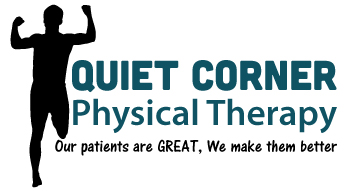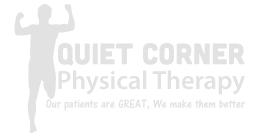
Maximizing Therapy: The Use of Multiple Soft Tissue Mobilization Techniques
Physical therapy is an excellent way to help people recover from injuries, improve mobility and manage pain. One key component of this approach is soft tissue mobilization, a manual technique used by therapists to improve tissue health, flexibility and function. By combining multiple soft tissue mobilization techniques, a skilled physical therapist can design a personalized treatment plan that yields the best possible outcomes for the patient.
The Basics of Soft Tissue Mobilization
Soft tissue mobilization is a hands-on therapeutic approach commonly used in physical therapy. Its focus is on the soft structures within the body, such as muscles, tendons, ligaments, fascia, and nerves. The primary objectives of this method are to resolve muscle stiffness or inelasticity, referred to as adhesions, enhance circulation, reduce muscle tension, and foster overall flexibility and mobility. This is achieved through a variety of techniques that stretch, manipulate and mobilize the body’s soft tissues. The physical therapist uses their hands to directly interact with the patient’s body, applying specific movements and pressures that target the soft tissue structures. This direct interaction not only allows the therapist to identify areas of stiffness or tension but also enables them to customize the treatment to the individual patient’s needs. The goal is to facilitate healing, minimize pain, and enhance the patient’s ability to move. These objectives make soft tissue mobilization an essential part of a comprehensive physical therapy treatment plan, especially when used in conjunction with other techniques and therapies. The versatility and adaptability of soft tissue mobilization mean it can be applied to a wide range of conditions, from sports injuries to chronic pain disorders.
Strain-Counterstrain Technique
The Strain-Counterstrain method presents an alternative way to manage and alleviate discomfort from various musculoskeletal disorders, including persistent neck pain and muscle spasms. This technique revolves around the patient moving into a position that provides the greatest comfort. The physical therapist then gently stretches the soft tissues, introducing a low-intensity, passive stretch.
The objective of the Strain-Counterstrain technique is to counter and rectify abnormal neuromuscular reflexes that lead to structural issues and postural discrepancies. These reflexes can create and perpetuate a cycle of muscle tension and pain. By applying a gentle stretch, this technique disrupts this cycle, helping to reduce tension and promote healing.
Moreover, the use of a comfortable position during therapy also aids in reducing the body’s defensive response, facilitating a deeper and more effective treatment. This technique, therefore, not only addresses immediate discomfort but also targets the root cause of the problem, providing a comprehensive approach to treatment.
With its gentle nature, Strain-Counterstrain is a preferred option for patients who may not tolerate the intense pressure of other techniques, making it a versatile tool in the arsenal of any physical therapist. By integrating this method into a patient’s treatment plan, physical therapists can offer a tailored and patient-centered approach, further maximizing the benefits of soft tissue mobilization.
Myofascial Release
Myofascial Release stands as a powerful soft tissue mobilization technique in the realm of physical therapy. The approach revolves around applying gentle, continuous pressure into the body’s myofascial connective tissues. These tissues surround and support the muscles throughout the body, and when they’re restricted, it can lead to discomfort, tension, and reduced mobility. By using their hands to exert sustained pressure, a physical therapist can effectively ease these restrictions, restore proper movement and decrease pain.
This technique is especially beneficial in treating a variety of health conditions. Patients with fibromyalgia, for example, often experience widespread musculoskeletal pain and tenderness – symptoms that Myofascial Release can help alleviate. This method is also advantageous in managing conditions like carpal tunnel syndrome, where pressure on a nerve in the wrist can cause tingling, numbness and other symptoms. Temporomandibular joint (TMJ) disorder, characterized by pain and dysfunction in the jaw joint and muscles controlling jaw movement, is another condition where this technique proves useful.
During a Myofascial Release session, the physical therapist applies pressure using their hands, knuckles, or other tools to the areas of the body where the patient feels tension or pain. This pressure is maintained for several minutes until the therapist feels the tissue soften and release, indicating that the restrictions have been eased. The patient may feel a sensation of release or relaxation in the targeted area, along with a reduction in pain.
Incorporating the Myofascial Release technique into a comprehensive treatment plan allows a physical therapist to address not only the symptoms but also the underlying causes of the patient’s discomfort. This hands-on technique enhances overall treatment outcomes, assisting patients in regaining mobility, reducing pain, and improving their quality of life.
Trigger Point Therapy
Trigger Point Therapy is another specialized technique used in soft tissue mobilization. It focuses on dealing with ‘trigger points,’ which are essentially tight spots found within muscle tissues. These trigger points can cause discomfort, not only in the immediate area but can also lead to referred pain in different regions of the body. The term ‘referred pain’ refers to the phenomenon wherein pain is experienced at a location distant from the source.
A physical therapist employs direct pressure to these specific points during a trigger point therapy session. The therapist applies pressure using their fingers, knuckles, or specialized tools, depending on the patient’s comfort level and the hardness of the trigger point. This is done to elicit a response from the trigger point, often resulting in a feeling of release or relief.
One of the main advantages of trigger point therapy is its capacity to alleviate pain, which can be a significant hindrance to a patient’s daily activities and overall quality of life. Additionally, by addressing these trigger points, physical therapists can help enhance a patient’s range of motion. This is because trigger points can restrict movement due to the discomfort they cause and the tension they create within the muscle tissue.
Moreover, trigger point therapy can also contribute to the enhancement of overall muscle function. In addressing these knots of tension, this method assists in restoring normal muscle length-tension relationships, optimizing muscle performance and function. This can be especially beneficial for patients looking to return to regular physical activities, including sports, after injury or prolonged periods of reduced mobility.
By incorporating Trigger Point Therapy into a patient’s treatment plan, physical therapists can provide targeted relief from persistent muscular discomfort. This not only addresses immediate pain concerns but also contributes to the broader goals of improving mobility and restoring function, enhancing the overall impact of soft tissue mobilization in a patient’s recovery journey.
Cross-Fiber Friction Massage
Cross-Fiber Friction Massage is a unique type of soft tissue mobilization technique that revolves around applying pressure in a direction that is perpendicular to the soft tissue fibers. This direction of pressure is significant because it varies from traditional massage strokes that generally follow along the length of the muscle, tendon or ligament.
The focus of this technique is primarily on adhesions, which are essentially knots that develop within the soft tissues due to factors such as injury, overuse or inflammation. These adhesions can cause discomfort and restrict movement, hindering a patient’s mobility and overall quality of life.
In a Cross-Fiber Friction Massage, a physical therapist uses their fingers to apply targeted pressure across the grain of the muscle, tendon or ligament. The cross-fiber motion helps to disrupt and break down the adhesions, enhancing flexibility and range of motion.
This method not only targets the immediate area of adhesion but also stimulates the surrounding tissues. The friction generated by the cross-fiber strokes encourages increased blood flow to the area, which can boost the body’s natural healing process. This can be beneficial in addressing the underlying causes of the patient’s discomfort and promoting overall tissue health.
Cross-Fiber Friction Massage has proven particularly effective in treating conditions that result from overuse or repetitive stress injuries. Conditions such as tennis elbow, carpal tunnel syndrome, and shin splints, which are common among athletes and individuals who engage in repetitive tasks, can significantly benefit from this technique.
Overall, the Cross-Fiber Friction Massage technique presents a comprehensive approach to soft tissue mobilization. By targeting adhesions and promoting healing, it aids in pain relief and the restoration of normal movement. With its ability to be tailored to individual patient needs, this technique adds another layer of versatility to the toolbox of any skilled physical therapist.
Proprioceptive Neuromuscular Facilitation (PNF)
Delving deeper into the realm of soft tissue mobilization techniques, we find Proprioceptive Neuromuscular Facilitation (PNF). PNF utilizes a combination of passive stretching and isometric contractions to target specific muscle groups, with the aim of enhancing muscular elasticity and fortifying weakened areas. This approach is distinct from other techniques due to its emphasis on the neuromuscular component, capitalizing on the body’s natural reflexes to facilitate greater range of motion and strength.
In a typical PNF session, a physical therapist would guide the patient into a passive stretch, holding the position to allow the muscle to acclimate. Following this, the patient is asked to contract the stretched muscle against the therapist’s resistance for a few seconds. After the contraction, the muscle is relaxed and then passively stretched again, this time aiming to reach a new point of flexibility.
What makes PNF stand out is its adaptability. The technique can be tailored to target different muscle groups, making it a useful tool in treating a wide variety of conditions and injuries. This is particularly beneficial for athletes who are working towards injury prevention or looking to enhance their overall performance.
Importantly, PNF doesn’t just address the symptoms of musculoskeletal disorders but also helps improve the patient’s physical abilities. With a focus on muscle elasticity and strength, PNF plays a vital role in restoring function, further enhancing the scope and effectiveness of soft tissue mobilization. By leveraging the power of the body’s reflexes, this technique works towards creating sustainable change in muscle function and mobility.
A skilled physical therapist can offer patients a comprehensive treatment plan that goes beyond immediate symptom relief, addressing the root causes of their discomfort and fostering sustainable healing. By enhancing flexibility, reducing muscle tension, and improving blood circulation, these methods facilitate not only the recovery from injury but also the prevention of future issues. Especially when combined with other therapeutic techniques, soft tissue mobilization becomes a powerful tool in the pursuit of overall wellness, mobility, and quality of life. Therefore, recognizing the value of these techniques and the potential they hold for patient outcomes is crucial for those in the field of physical therapy. Contact us today and learn more.


